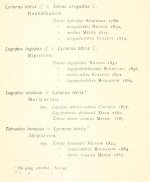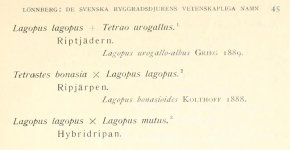B
RUNER, P. L. 1972. Field guide to the birds of French Polynesia. Pp. vi+135, 13 plates of line drawings, 2 maps. Honolulu: Bernice P. Bishop Museum; no price given, available from B.P. Bishop Museum, P.O. Box 6037, Honolulu, Hawaii 96818, U.S.A.
This duplicated publication with stiff paper covers is the first book on the birds of French Polynesia, but it contains so many errors that it cannot be recommended. Seabirds make up about half of the bird fauna of the region and pose most of the difficult identification problems, yet this book merely lists some of the commonest species, without giving identification details. Descriptions of some land birds are misleading, for example adult male
Pomarea mendozae are black and white, and adult females brown; Bruner describes both sexes as " brown with black and white streaks " (p. 114).
The distributional and biological information is inaccurate for many species.
One of the worst examples of this is Cacroenis (sic) inornatus (p. 47); this is described as a rail from the Tuamotus, and it is said that "Descriptions of this bird are confusing and obscure", then "that it is reported as a small speckled bird of generally brownish appearance"; its name is correctly spelled Cactornis in the final checklist, which is synonymous with Pinaroloxia inornata (the latter is mentioned as an introduced bird on p. 125, which is not so); this species is the endemic geospizid from Cocos Island which was incorrectly reported from the Tuamotus in 1891.
The taxonomic treatment and nomenclature could confuse even a museum worker with access to much of the old literature:
Strix delicatula (p. 94) turns out to be an old synonym of
Tyto alba, despite its being placed in the Strigidae in this book, and
Pachycephala is placed in the Laniidae (the inclusion of both of these genera seems to be due to mistakes made in the last century that have been corrected many times since). Spelling and typographical errors abound, including the repeated use of "genius" for genus and "specie" for a species. The drawings are of poor quality, with a number of obvious mistakes such as a
Collicalia ocista (
sic =
Collocalia leucophaea ocista) perching on a twig.
As education of local people offers the best hope for the survival of some endangered Polynesian birds it is unfortunate that the first book available to them should be so unreliable.
D. T. H.









